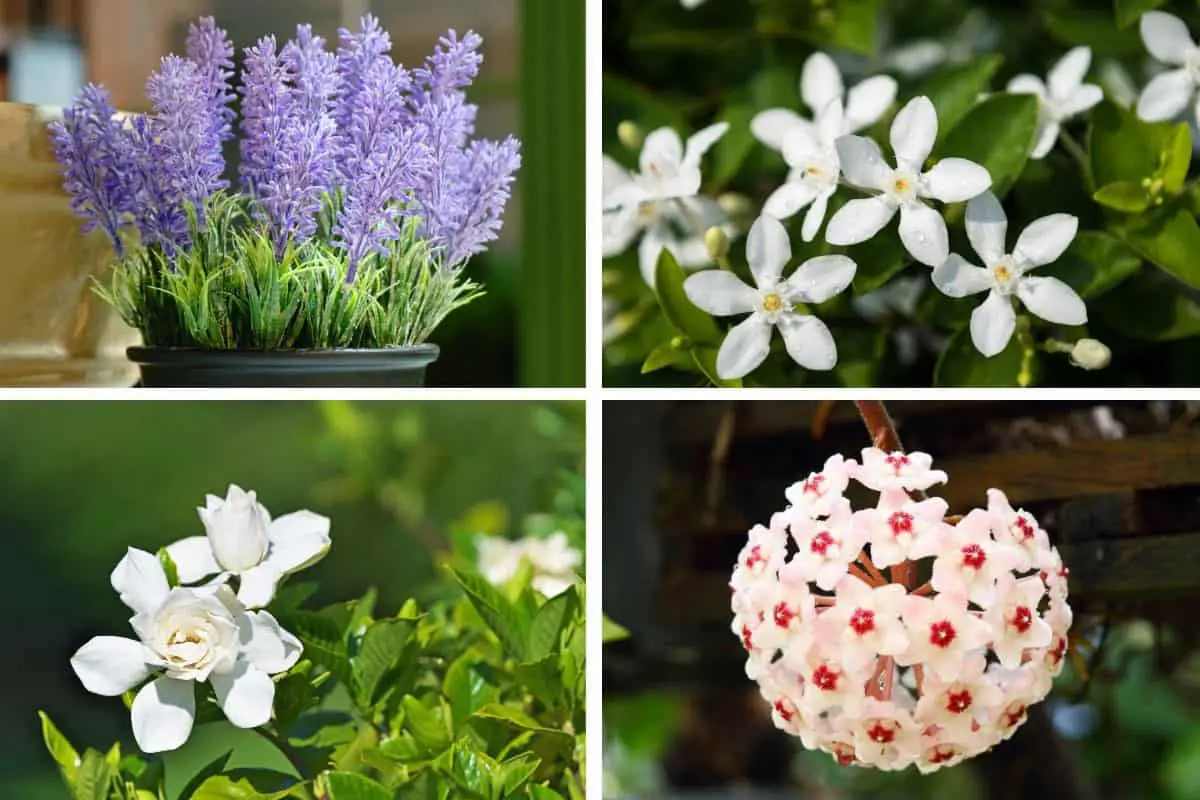This page may contain affiliate links. If you click and buy, we might get a small commission at no cost to you.
Houseplants with fragrant blooms can transform any indoor space into a delightful haven, offering not just visual beauty but also enchanting aromas. These plants bring a refreshing scent to your home, uplifting your mood and creating a more inviting environment. Here are seven houseplants with fragrant blooms that can enhance your indoor garden.
1. Jasmine (Jasminum polyanthum)
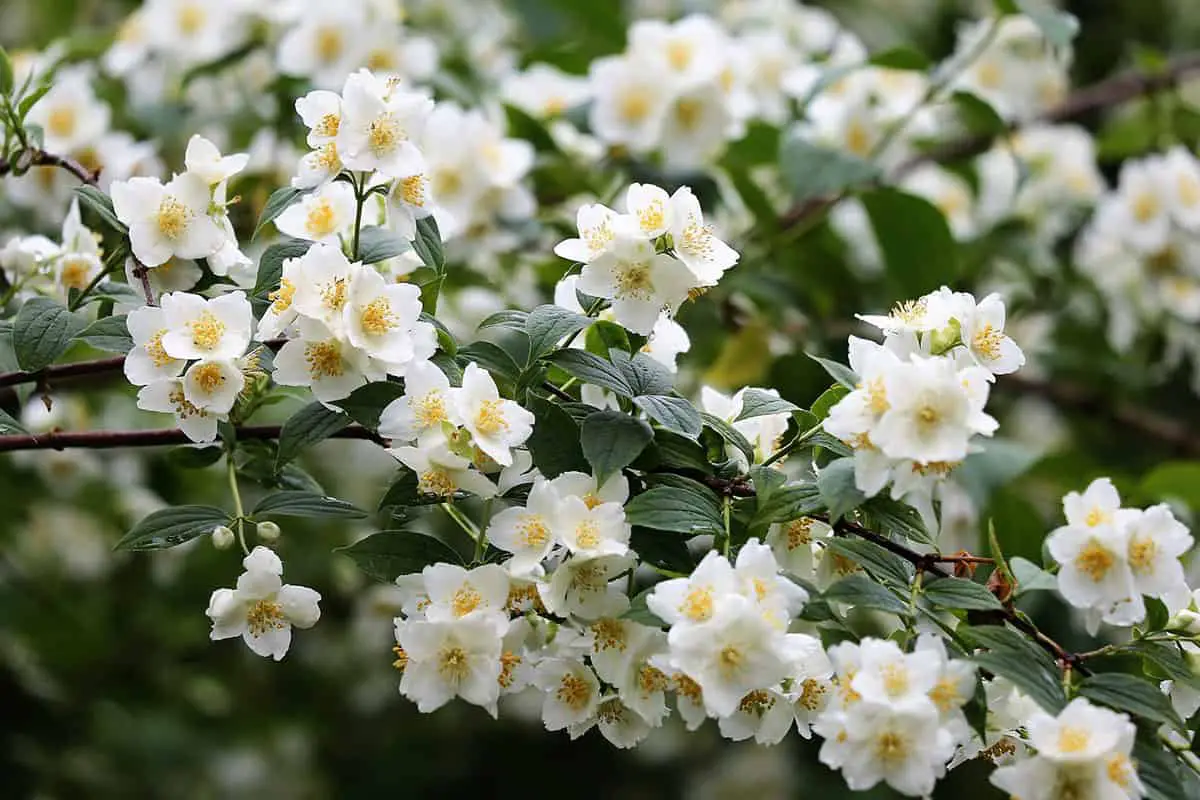
- Light: Bright, indirect light
- Water: Keep soil consistently moist but not waterlogged
- Humidity: Prefers high humidity
- Temperature: 60-75°F (16-24°C)
Jasmine is renowned for its sweet, intoxicating fragrance that fills the air with a lovely aroma. This climbing plant produces clusters of small, white flowers that bloom in late winter to early spring. Its captivating scent makes it a popular choice for indoor gardens.
To care for Jasmine, place it in bright, indirect light and keep the soil consistently moist. High humidity is crucial for this plant, so consider using a humidifier or placing it on a pebble tray with water. With proper care, Jasmine will reward you with its delightful blooms and enchanting fragrance year after year.
2. Gardenia (Gardenia jasminoides)
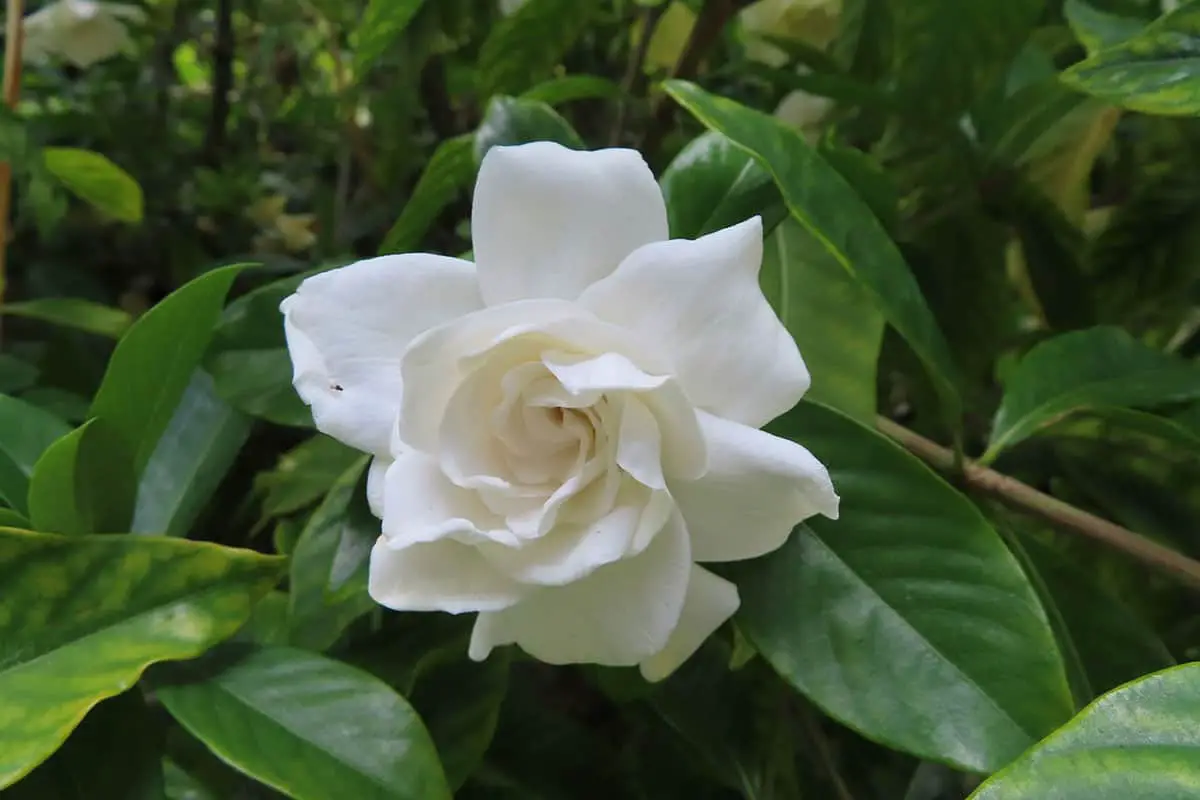
- Light: Bright, indirect light
- Water: Keep soil evenly moist
- Humidity: Prefers high humidity
- Temperature: 60-70°F (16-21°C)
Gardenias are famous for their creamy white flowers and their strong, sweet scent. These evergreen shrubs can be somewhat finicky but are well worth the effort for their beautiful and aromatic blooms. They typically bloom in late spring and summer, bringing a touch of elegance and fragrance to your home.
Place your Gardenia in bright, indirect light and maintain high humidity to prevent the buds from dropping. Regular misting or a humidifier can help achieve the desired humidity levels. Keep the soil evenly moist but not soggy, and ensure good drainage to prevent root rot. With the right conditions, Gardenias can fill your home with their unforgettable scent.
3. Hoya (Hoya carnosa)
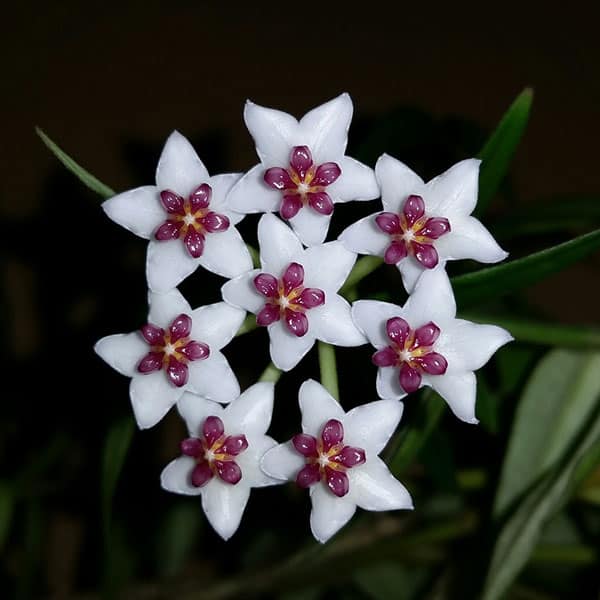
- Light: Bright, indirect light
- Water: Allow the soil to dry out between waterings
- Humidity: Prefers moderate to high humidity
- Temperature: 60-85°F (16-29°C)
Also known as the Wax Plant, Hoya carnosa is appreciated for its clusters of star-shaped, fragrant flowers and thick, waxy leaves. The flowers have a sweet, honey-like fragrance that intensifies in the evening, making them a perfect addition to your indoor garden.
Hoyas thrive in bright, indirect light and prefer to dry out slightly between waterings. They are relatively low-maintenance and can tolerate occasional neglect. For best results, provide moderate to high humidity and avoid overwatering. With minimal care, Hoya will reward you with its unique and fragrant blooms.
4. Orange Jessamine (Murraya paniculata)
- Light: Bright, indirect light
- Water: Keep soil evenly moist
- Humidity: Prefers moderate humidity
- Temperature: 60-80°F (16-27°C)
Orange Jessamine, also known as Mock Orange, produces small, white flowers with a delightful, citrusy fragrance. This evergreen shrub can bloom multiple times a year, filling your home with its refreshing scent and delicate flowers.
Place Orange Jessamine in bright, indirect light and keep the soil evenly moist. It prefers moderate humidity, so occasional misting can help maintain its health. With its frequent blooms and pleasant aroma, Orange Jessamine is an excellent choice for an indoor fragrant plant.
5. Sweet Olive (Osmanthus fragrans)
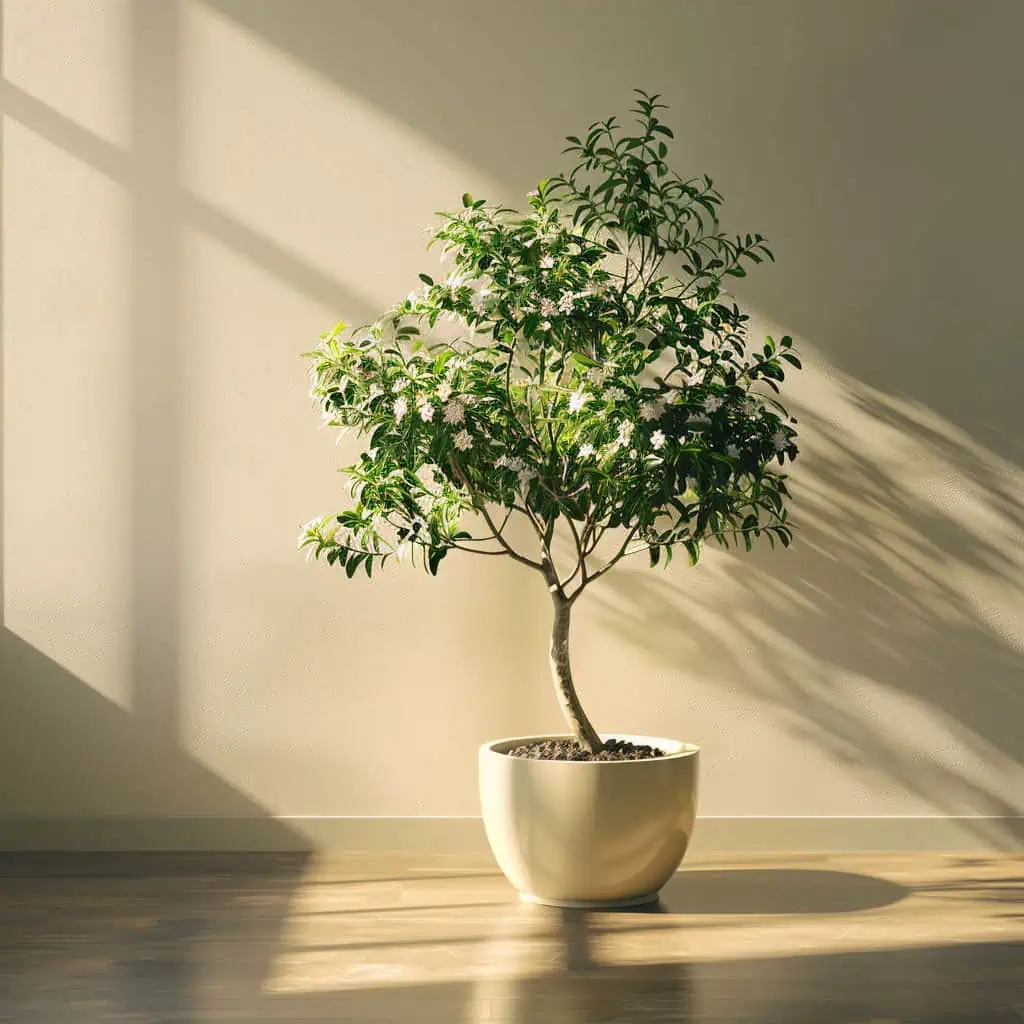
- Light: Bright, indirect light
- Water: Allow the top inch of soil to dry out between waterings
- Humidity: Prefers moderate humidity
- Temperature: 60-75°F (16-24°C)
Sweet Olive is cherished for its small, creamy white flowers that emit a powerful, apricot-like fragrance. This slow-growing shrub blooms intermittently throughout the year, providing a continuous source of delightful scent in your home.
To care for Sweet Olive, place it in bright, indirect light and allow the top inch of soil to dry out between waterings. Moderate humidity is ideal, so occasional misting or a pebble tray can be beneficial. Sweet Olive’s aromatic blooms make it a treasured addition to any indoor garden.
6. Eucalyptus (Eucalyptus cinerea)
- Light: Bright, indirect light
- Water: Allow the soil to dry out between waterings
- Humidity: Prefers moderate humidity
- Temperature: 65-75°F (18-24°C)
Eucalyptus is not only known for its striking silvery foliage but also for its refreshing, menthol-like fragrance. While it’s more commonly grown for its leaves, it can produce small, white flowers when grown indoors, adding to its aromatic appeal.
Place Eucalyptus in bright, indirect light and allow the soil to dry out between waterings. It prefers moderate humidity and can benefit from occasional misting. Eucalyptus brings a unique and invigorating scent to your home, making it a popular choice for indoor gardeners.
7. Lavender (Lavandula)
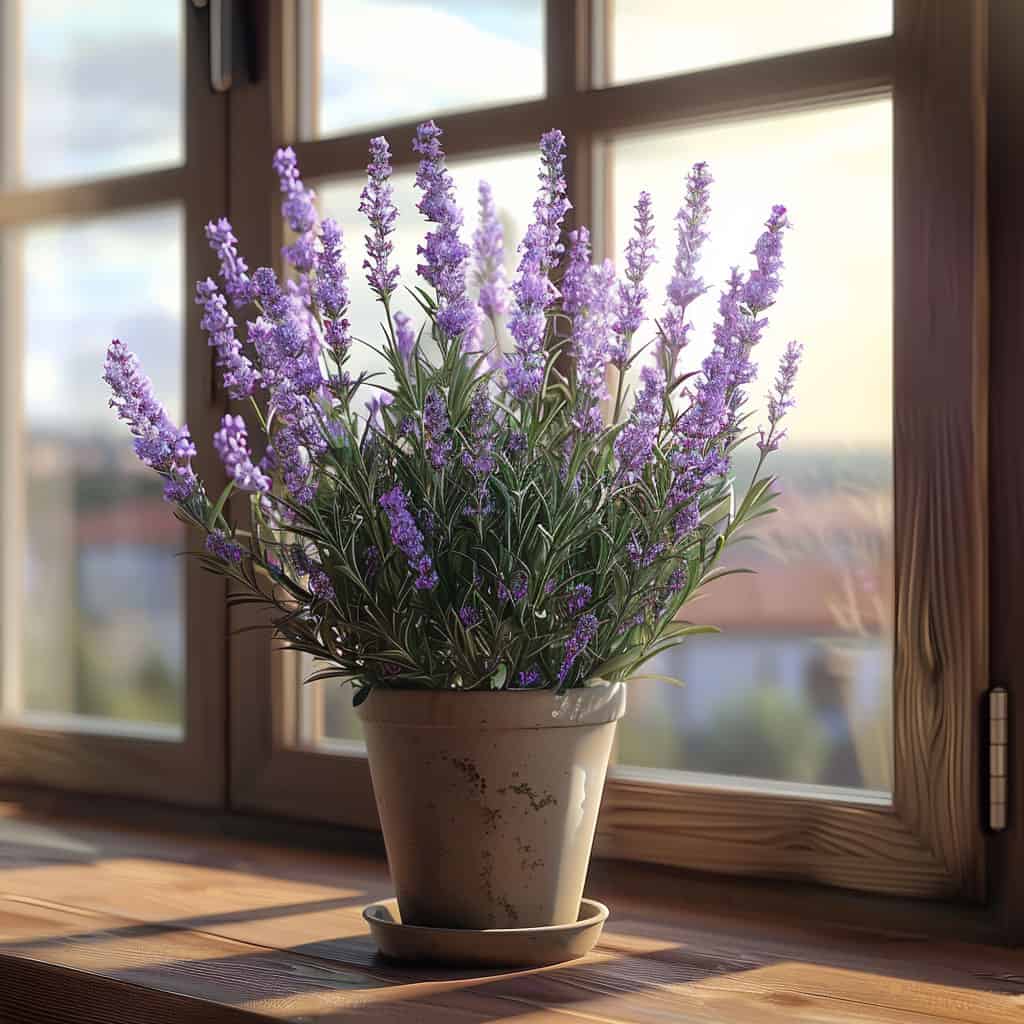
- Light: Bright, direct light
- Water: Allow the soil to dry out between waterings
- Humidity: Prefers moderate humidity
- Temperature: 60-75°F (16-24°C)
Lavender is well-known for its soothing fragrance and beautiful purple flowers. Growing lavender indoors can provide a relaxing atmosphere and make your home smell wonderful. Its calming scent is perfect for creating a tranquil environment, especially in bedrooms and living areas.
Place Lavender in bright, direct light and allow the soil to dry out between waterings. It prefers moderate humidity and good air circulation. With proper care, Lavender can thrive indoors, offering both its lovely fragrance and striking appearance to enhance your home.
